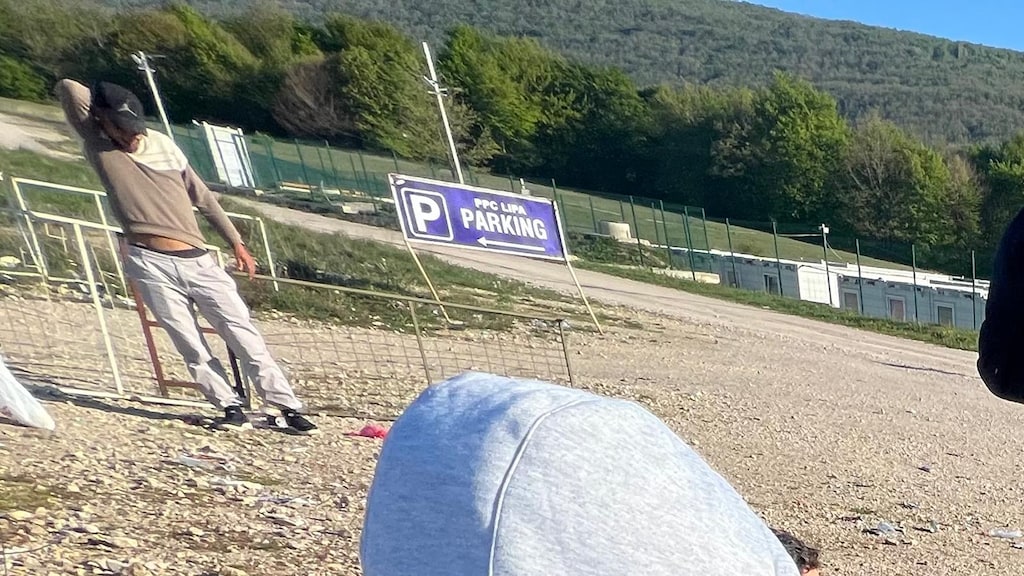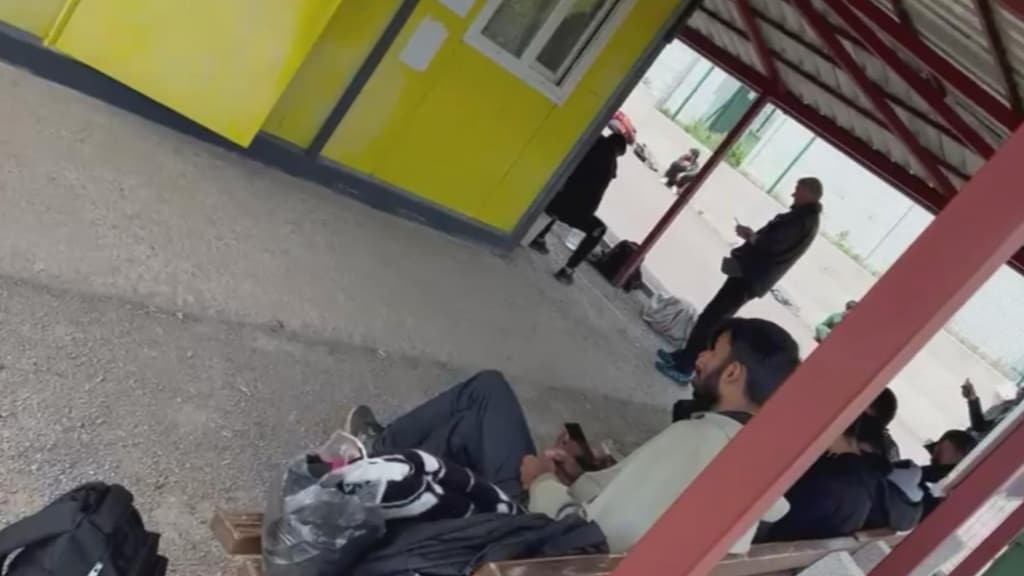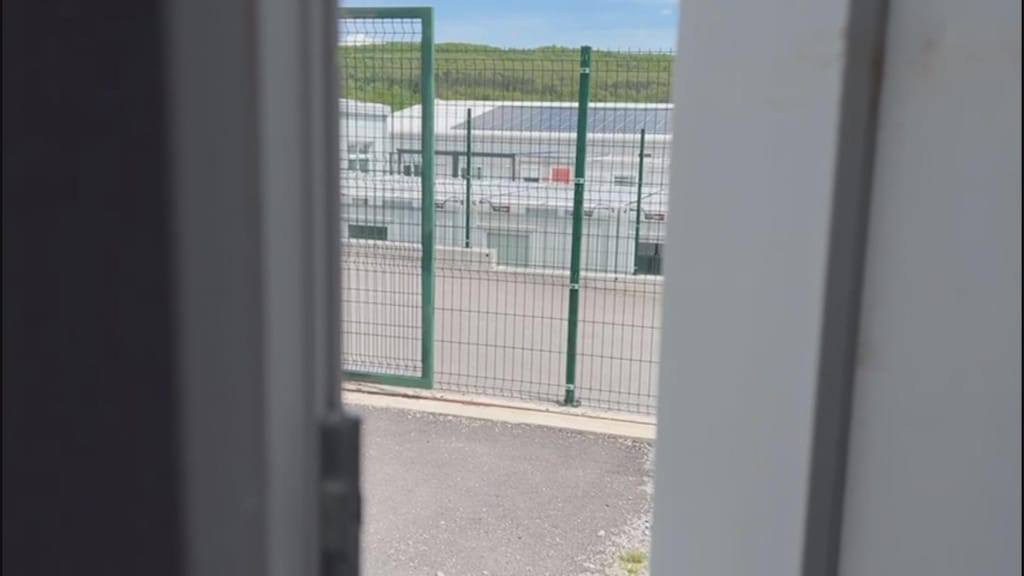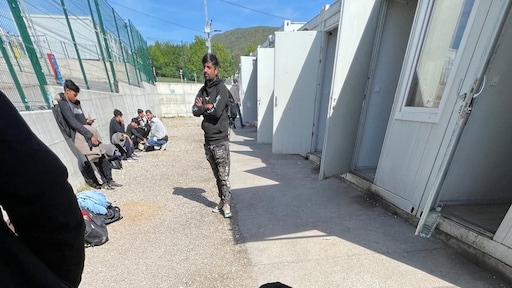Bed bugs, bad food and poor treatment. For example, migrants live in the EU-funded Lipa reception center in northwestern Bosnia and Herzegovina, just outside the border with the EU. RTL Nieuws went undercover to the heavily guarded reception center to find out what conditions the migrants are living in here.
In order to write this story, a journalist from RTL Nieuws checked in to Camp Lipa. He spent a day there undercover (see disclaimer at bottom of this story). He spoke to many refugees and experienced first-hand what things are like in the camp.
Obaida (27 years old) from Syria stands outside the gate of Lipa camp. He takes off his shirt to reveal red spots on his back and stomach. He turns the shirt inside out, holds it in front of his face, and points to the seam. And he says, “Look, look, these are them. They also have eggs hanging on them.” Bed bugs visible on shirt. “It gives me the creeps. I've never experienced anything like this.”
Gateway to the European Union
The Lipa reception camp was built in 2021 and has a capacity of 1,500 migrants. The European Union is the largest funder and a number of individual European countries have also contributed to the construction. It is intended for temporary residence.
Most of the migrants and refugees in the camp want to reach EU member states such as Croatia and Slovenia, because these countries are a gateway to other EU countries, especially Western EU countries such as the Netherlands and Germany, where they believe they have a better future.
Photos of RTL correspondent Nieuws who was undercover in the camp:
They meet at the camp and form groups to try to cross the border with Croatia together. They also share routes with each other via Google Maps where they can better cross borders. Many smugglers live in the camp, who promise migrants a safe and successful crossing in exchange for thousands of euros.
Lipa camp is located in a remote area and is completely enclosed by high concrete and iron fences. It is almost impossible to enter or exit the site without passing through armed security guards and police officers at the entry gate. There are surveillance cameras everywhere in the camp.
Action
Registered migrants are received in the camp in isolation for the first night in a section surrounded by a high iron fence. The next day, security guards and camp staff enter the isolation room early in the morning and knock on the room doors to wake up the migrants. Someone shouts: “Medical examination.” “Line up and wait,” he adds. As in prison.
Waiting in full sun takes at least an hour. The migrants are then called in groups of five for a medical examination. When they entered the office, the security guard ordered them to sit on one of the chairs. He stands in front of them and tries to guess their nationalities for fun. Afghan? Syrian? Iraqi? “If that's true, you should nod your head,” he says. When he finishes his game, the immigrants are allowed in for inspection. “It's humiliating,” one immigrant whispered.
If migrants have health problems, they are placed in quarantine. Healthy immigrants move to the next step: they are fingerprinted and photographed. During this process, migrants are manhandled, sometimes pushed and shouted at if they do not understand the security guards' instructions.
Once the formalities are completed, immigrants receive two permits. With one swipe they can get food. The second serves as proof that the migrant resides in the camp. They are then taken to their room. This is done on the basis of nationality. For example, Syrians are placed in a room with other Syrians, and Afghans with Afghans.
The rooms are 2 x 6 meters in size and have six bunk beds. There is heating, but no safes. The beds do not have proper sheets and are not changed. Bedbugs walk here and there on mattresses. “If you stay here for a few weeks, you will be completely destroyed,” says a migrant from Iraq who has been in the camp for seven months. “There is nothing more that can be done about it. They are everywhere in this camp.”
Cleanliness in the toilets and shower building is poor. Migrants have to walk through mud on wet floors to reach the toilet. There is no privacy. Shower cubicles do not have a door or curtains.
Four pieces of bread and a packet of meat
Just after noon, the immigrants walk en masse to the dining room. They have to show their card there to order. Syrian Ahmed (24 years old) holds his iron checkered plate. A kitchen employee places a scoop of pasta with watery tomato sauce and ground meat in one of the portions.

“Salad?” she asks in English, taking a scoop of chopped lettuce and dropping it into another room. “The food looks like vomit. You can't even feed it to your dog,” Ahmed says, pointing at pasta as he sits at one of the tables. “We get that often here.” For dinner there are four pieces of bread with a packet of meat. “We have to make do with it,” he says. “Buying food and making it yourself is not an option because there is no opportunity to cook in the camp. Moreover, it is expensive.”
It can take years
Obaida was not present in the dining room because he is in quarantine. “The itching there became unbearable,” he later said. It is uncertain how long he will spend in the camp.
Migrants' stay in Libya can last from a few days to years. It depends on how many attempts they make to cross into the EU. If the crossing fails, they return to camp. Ubaida made three failed attempts to cross the border until the day the report was prepared.

RTL News spoke to human rights organizations, an aid worker and a security guard who works or has worked in the Lipa camp. Not everyone wanted to be named in the article, because they had experienced in the past that critical expressions had caused problems.
It underscores the problems existing in the reception camp, for example regarding the quality of food and how migrants are treated. Security guard: “What I've often seen is that when someone first enters the camp, for example, they no longer have shoes or a jacket after being rejected, sometimes they first have to stand in line for two hours to register and only then do they get socks.” And clothes, if there were enough of them, and I often saw people waiting outside in the freezing cold.
“Camp according to standards”
Because the European Union is the largest funder of the camp, RTL News raises questions about the situation of migrants in the Lipa camp. The EU delegation in Bosnia states that the camp was built “according to EU standards” and is also well maintained with support from EU funds.
Lipa is managed by the Bosnian authorities. The European Union says it regularly requests information and visits Libya to ensure its administration complies with international humanitarian standards.

Preferably from outside the European Union
As an EU border state and an accession candidate state, Bosnia is an important partner in the field of migration management. Since 2018, the European Union has allocated more than 140 million euros to Bosnia to strengthen its capabilities. According to informed sources, the European Union has allocated funds mainly to the Lipa camp so that asylum procedures can be carried out outside the EU borders in the future. The European Union may even push for this to happen in Bosnia.
Last year, EU accession funds were used, however Without obtaining licenses from local authorities, by building a detention center in the camp. As far as we know, this detention center has not yet been used. The European Commission spokesman does not want to answer specific questions about this matter. “In general, the EU may work with countries outside the EU to manage migration and it is important that this is done in line with EU and international law.”
Last April, the European Parliament voted in favor of a new migration agreement. This is a series of laws that reform European asylum and migration policy. Migrants from so-called “safe countries”, who are unlikely to be entitled to asylum, should be deported more quickly. Refugees must be distributed more fairly across Europe. Migrants will be screened at the EU's external borders.
Some countries and political parties, including the BBB in the Netherlands, want asylum procedures and the reception of asylum seekers to be completely moved outside the EU. Italy is already working on this and has signed an agreement with Albania. A center will open there next fall, which, according to plans, could process 3,000 asylum procedures a year.
Disclaimer
For this story, a journalist from RTL News reported to the Lipa camp and spent a day there undercover. It is difficult for the media to access and almost impossible to photograph. Special media tours have been organized in the past, but they show a reality different from what the migrants say. This was the reason why RTL News went undercover to record the real situation.

Zombie specialist. Friendly twitter guru. Internet buff. Organizer. Coffee trailblazer. Lifelong problem solver. Certified travel enthusiast. Alcohol geek.

